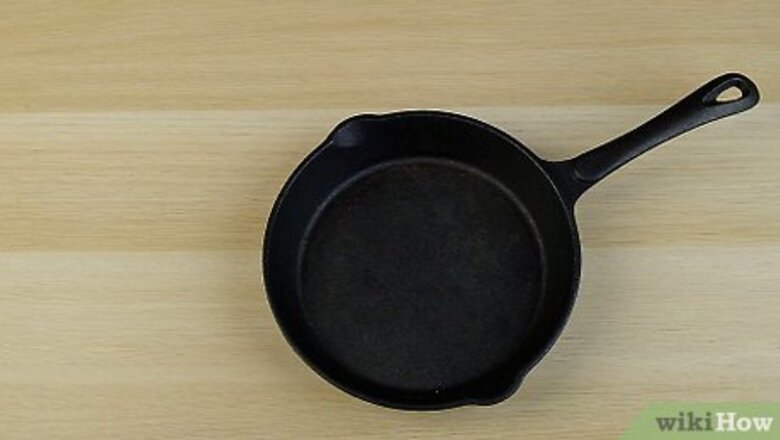
views
Selecting and Preparing the Pan

Choose the right pan. Some pans work better than others. Ideally, you'd like to use a heavy pan like a cast-iron pan. These pans can reach really high temperatures that help sear the edge of the meat and keep in the flavors. They also help to produce that slightly crusted char that provides a sweet flavor. Many prefer a cast-iron pan because it can be used to sear the meat before transferring it into the oven. A griddle pan could work as a substitute for a flat pan. Select a smaller pan if possible. If you choose a larger pan you may be tempted to cook more than one steak at a time, and potentially miss the mark on the doneness.
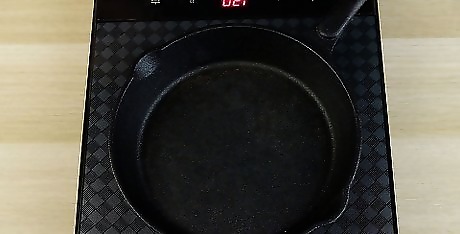
Preheat the pan. The reason you preheat is that the steak tastes better when the edges get seared quicker. A preheated pan allows the ribeye to brown evenly, eliminating the water and creating a sweet caramelization. Aside from that, a hot pan eliminates the need to flip the meat multiple times during cooking. If you have to flip the ribeye multiple times, don't worry too much. Some tests have shown the meat to be cooked more evenly and quickly when flipped multiple times.

Heat some oil. Choose something neutral like groundnut oil, which has a mild flavor and doesn't burn at high temperatures. Some other oils with high with smoke points are peanut oil, rice oil, and corn oil. If the oil is not hot, it could transfer an oily or greasy flavor to the meat. Use about a quarter cup (60ml) in a traditional 12-inch pan. Do not use butter as your medium, because it smokes too quickly at high temperatures. Do not mix butter with the oil. It will not stop the milk proteins in the butter from burning. To know when the oil is ready, wiggle the pan around and there should be a nice, free-flowing movement to the oil.
Preparing the Ribeye

Chose the right cut of meat. Ribeyes come in all shapes and sizes, but finding one roughly an inch (2.5 cm) thick is ideal. These steaks typically have the nice, fatty marbling on the interior that makes it delicious and moist. Additionally, there is little waste because of minimal gristle and a only thin strip of fat on the edge.
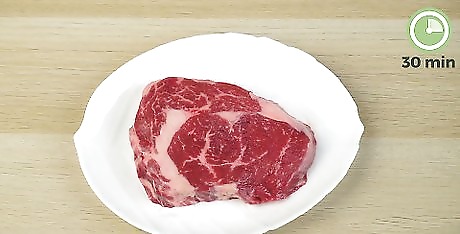
Set the meat out before cooking. Getting the meat to room temperature helps to ensure it's cooked all the way through. If the meat is cold, the outside of the meat may get dried out before everything is cooked through. It may take up to 30 minutes for a fresh out of the fridge ribeye to be ready for cooking. Be cautious not to leave the meat out too long, however; it could invite bacteria growth. Room temperature meat also cooks quicker. If it's not room temperature, there is a risk of a cold center.

Pat it dry. Use a paper towel to get rid of some of the outer moisture on the steak. If there are water droplets or extra moisture, you run the risk of steaming the steak. If the moisture is removed, the steak has a better chance of reacting with the hot oil to produce that great char. This doesn't need to be done aggressively. Patting too hard may flatten the meat out some.
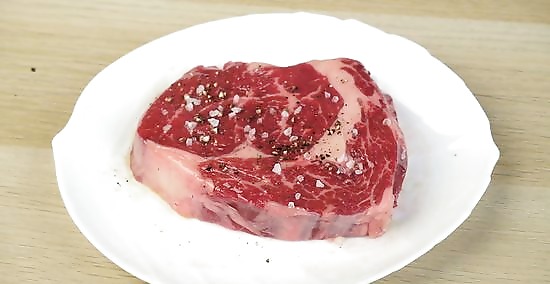
Season the ribeye. After the meat is patted dry, it's almost time to cook. First, it's time to apply spices. Different spices please different palates, and you'll know what works for you. In general, however, many chefs recommended dressing a steak with a drizzle of extra virgin olive oil, some black pepper, and kosher salt. Wait until just before cooking to apply the spices. Seasoning too long before cooking could cause the salt to dry out the ribeye.
Frying the Ribeye
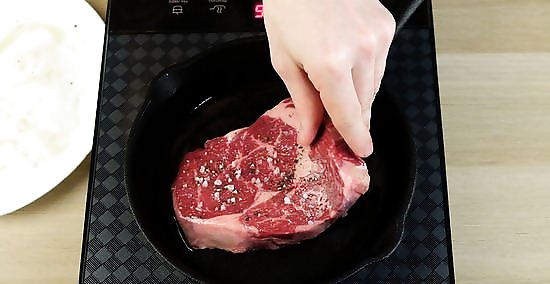
Set the meat in the pan gently. Putting it down too quickly can cause the hot oil to splatter. Try to centralize it in the pan so the heat is evenly distributed. It should make a pleasing sizzling sound immediately. If not, the oil is not hot enough. Additionally, it should stick to the pan. Give it a firm push all around to ensure there are no air pockets and all portions of the meat are touching the pan.

Resist the urge to flip the ribeye. No matter what you do, don't be tempted to peek at the steak's underside. Don't flip it. Don't move it. Simply wiggle the pan back and forth. If the meat releases, it's likely ready to flip onto the other side. If not, it needs more time. The generally accepted practice is to flip the steak one time. After each side is cooked, some prefer to use tongs and hold the ribeye fat-side-down, just to cook off some of the excess fat.

Cook it for a few minutes each side. Depending on the size of the steak and the thickness, cooking times vary. The same can be said for how hot the pan is. In general, however, the steak should be on each side for 2:30-4:30 minutes, depending on the level of doneness you prefer. This helps it cook all the way through, as well as cook off some of the fat. For a 3.5cm/1.3in. steak, the following is a good guideline: Rare – 2:15 per side (125 F/ 51C) – There will be significant redness inside. A very pliable ribeye. Medium-rare – 3:15 per side (135 F/ 57C) – More pink than red, this steak will be slightly tougher than rare and have considerable juices flowing. Medium – 4:15 per side (140 F/ 60C) – Slightly pink inside, there will be minimal juice escaping. Well-done – Over 4:15 per side (155 F/ 68C) – Cooked until thoroughly dark, the level of doneness ranges from spongy to hockey puck, depending on the desired result. Some prefer to get the initial char and then put it into the oven. This is a good way to retain moistness and flavor.
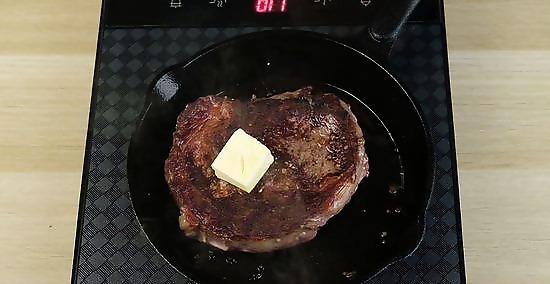
Baste the steak. While you're cooking it, put in a few slabs of butter. Once the butter is melted, use a spoon and repeatedly baste the steak over and over. The reason for this is to establish an outer-crust, as well as improve and accentuate the flavor.
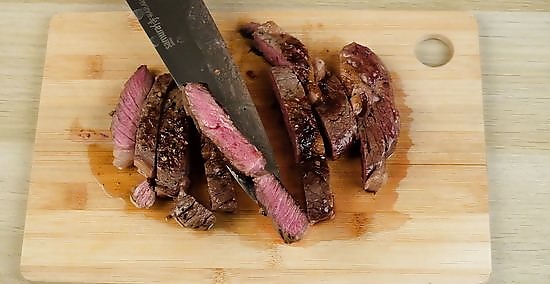
Let the ribeye rest before serving. Take it out and let it sit for 5-10 minutes after you're done cooking. When the steak rests, the meat fibers reabsorb the juices of the steak. Realistically, the meat remains moist and retains heat for nearly 10 minutes after being taken out of the pan. You can even add a pat of butter onto the hot steak once it's been set on a plate.


















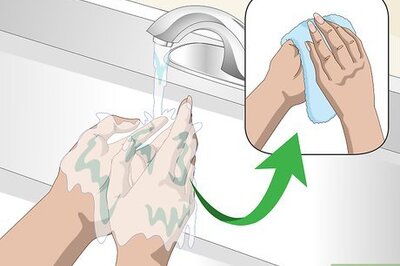
Comments
0 comment